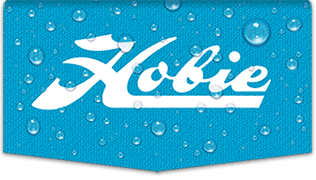WAVERIDER wrote:
My take on using a kayak for purely exercise. It may be tempting to go for a short harder to paddle one. However, your enjoyment tapers off pretty quick so you give up. Get the best, sleekest one you can, you will enjoy it more and put more miles in.
Great advice!
Quote:
A further note on paddling hobie mirage kayaks, you have no rudder control as it is hand operated. This creates huge tracking difficulties as the keel is not extended at the rear.
I have to disagree on this point. True that the Mirage Drive Hobies don't track with the rudder up, but the purpose of this is to gain maneuverability with the rudder. Anyone who has trouble tracking using the "Sailing rudder" with the rudder down, has their rudder improperly adjusted. If the rudder directional lines are snug, the rudder will not move without manual input.
With the Revo 16, it's true that frequent rudder controls are sometimes required while paddling because it's hard to get the rudder set exactly right, and paddle and edging corrections are not very effective. Frequency of corrections varies depending on how accurately you set the rudder and how precise your track needs to be. With the Revo 13 and Revo 11, on the other hand, once the rudder is set, you can make minor corrections by edging (lean-steering) and the paddle without ever touching the rudder except for a sharp change of course.
You don't need a wide boat for fishing. All the Hobie line is used for fishing; the "fishing" models mostly just have more pockets and spaces to carry tons of fishing equipment. For example, here's an Adventure (Revo 16) ocean fishing:

and a Revo 13 fully equipped with everything possible:

daft wrote:
I don't think simultaneous mode works well with low resistance. You end up wildly windmilling the paddle in the air like a cheerleader with a baton, because your pedals will be driving you too fast for your paddle to keep up.
Say you are exceeding 4mph by pedals alone on a slim kayak. That is 6 feet per second, which perhaps equals two of your 3 foot paddle strokes. But that is just to wet them - to add thrust you have to stroke faster than just keeping up with the water flow. On top of that with leg conditioning you will exceed 4mph - what were Roadrunner results, something approaching 6? Furthermore there is the goofy asynchronous rhythm because the paddling rate goes up linear with your speed but pedaling goes up in some nonlinear fashion.
Of course, this "conjecture" is not the case at all. Olympians exceed 12 MPH paddling their racing kayaks. Daft may be thinking that one paddles at the same rate as the pedaling stroke. In actuality, the paddle may or may not be linked to the pedal stroke. In my case, one paddle stroke is taken for every 3 pedal strokes; each paddle stroke launches off the stroking foot. For example, right paddle dips with right foot stroke; left and right foot strokes occur while paddle exits water and sets up left side. Next (left) paddle launches with left foot stroke, etc. etc. Everybody has to workout their own rhythm. At first it can be arms hitting knees and thumbs scrapped along the gunwales (especially with the wider boats), but with practice, the foot, hand and breathing patterns merge into a symphony of motion.


Revolution 16

Revolution 11









